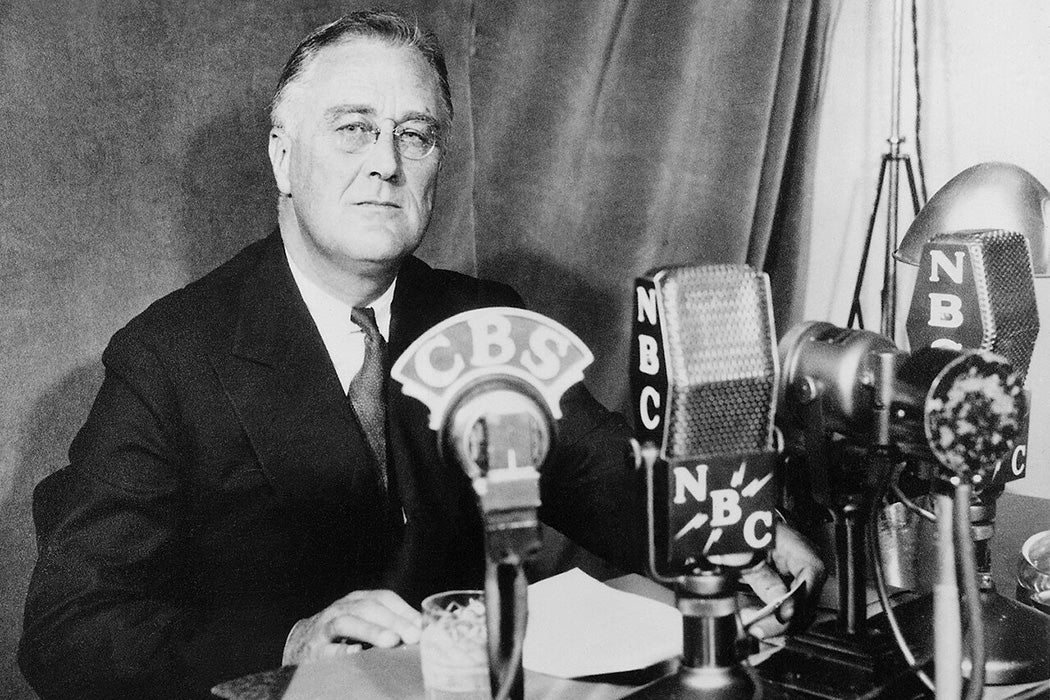In Franklin Delano Roosevelt’s famous “fireside chats,” the president calmly talked the American people through the Great Depression and World War II. His chats show the emerging power of radio in the twentieth century—but not every politician used radio in the same way.
Historian Huub Wijfjes argues that radio and microphones presented challenges to politicians in the 1930s, forcing them to adapt if they wanted to connect with their audiences. He uses Roosevelt, Adolf Hitler, Winston Churchill, and Dutch Prime Minister Hendrikus Coljin as case studies to show how strategies varied.
By the 1930s, radical politicians had perfected the mass political rally. They stood up in front of their crowds, speaking loudly while gesticulating and walking across the stage. Wijfjes describes how “performing emotions” in this way created a deep bond with the audience and uses the term “spellbinding” to describe their rhetorical style. The fascist leaders of interwar Europe were experts in spellbinding. Counterintuitively, new sound technologies made this more difficult. Microphones rooted speakers in one place, and radio audiences were in their living rooms, not immersed in the rally atmosphere.
Wijfjes explains how Nazi minister of propaganda Joseph Goebbels, actually kept Hitler off the radio after their first studio broadcasts.
“Given his proclivity for shouting in a high voice,” Wijfjes writes, “Hitler was not very suitable for radio in the living room.”
They took Hitler out of the studio and broadcast his rallies directly. Groups of people listened together in workplaces and other public spaces. Reporters conveyed the rally atmosphere to audiences across the country. For people who didn’t attend these events, Hitler’s frenzied emotional appeals were piped directly into living rooms through cheap radio sets.
While trying to combat Hitler, Winston Churchill also struggled to adapt to radio. He was something of a spellbinder but was tuned to Parliament, where he used sophisticated language and careful arguments. This didn’t translate well to the radio audience, writes Wijfjes. At key moments, however, Churchill’s “lofty and metaphorical language” fit the gravity of the events, and his most memorable lines come from these broadcasts.
Other politicians worked to create a direct and intimate connection with people in their homes. This was Roosevelt’s goal in the fireside chats. Roosevelt’s disability made him more comfortable behind a microphone, and he cultivated a calming voice well suited to radio. Roosevelt recorded with family and friends in the room, and he remained grounded in topics important to the audience.
Weekly Newsletter
“He created an imagined community,” writes Wijfjes, describing how Roosevelt used radio to bring together people across the United States into a shared experience. Hendrikus Coljin tried to replicate this in his radio addresses to the Netherlands, using a measured voice while trying to avoid talking too much about relations with Germany.
Wijfjes believes this strategy reflected the way that singers like Bing Crosby adapted to the radio by “crooning” in “soft and tender” voices. It allowed them to convey sincerity and authenticity, projecting a calm hope in uncertain times.







